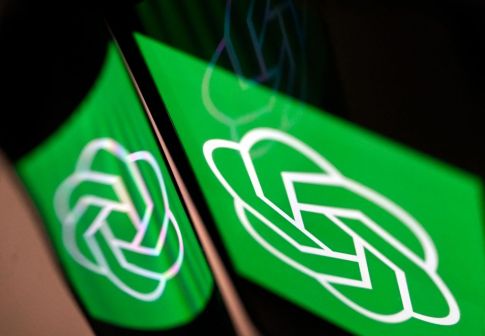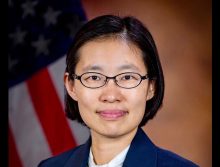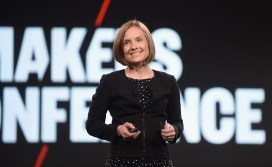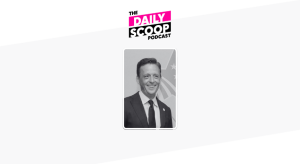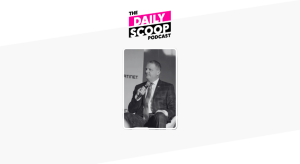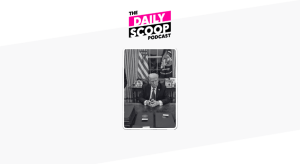Program gets women coding with NASA data
Tracey Birch, a woman with 25 years of experience in software development and system administration, had never seen so many women in tech in one room.
Last week she was named as one of 49 NASA Datanauts — just five of whom are men — for the 2016 program, which aims to give more women with varying programming experience opportunities to use NASA data and code with it.
Along with her colleagues, Birch — who worked with her three children on NASA’s International Space Apps Challenge earlier this year — will participate in advanced monthlong challenges that give her the opportunity to build on her coding skills, and teach other female participants and her kids new tricks.
“I’m hoping to show them a positive role model for women in tech,” Birch said.
The Datanauts program was conceived when the Open Innovation Team at NASA noticed that participants in the International Space Apps Challenge were overwhelmingly men — about 80 percent of them. The team decided to tackle how to engage more women in tech through a yearlong study, bearing two initiatives out of that work: the Datanauts program and a one-day boot camp to prep people before the International Space Apps Challenge.
The all-female inaugural Datanauts class advised the team on how to design the program, said Beth Beck, open innovation program manager in the Office of the CIO at NASA.
The group is made of mostly adults but includes some university students and one high school student — from all across the country with different experience levels in coding and data science.
The 2016 Datanauts program includes several distinct components:
- The Challenges: Datanauts can work alone or with a group on the monthly challenges, some of which are from Space Apps and others that are designed specially for the program. The 2016 program is six months long, and each month there will be a beginning, intermediate and advanced challenge for the participants, who all have different levels of experience.
- “Water cooler chats”: NASA will host short conversations at least once a week online for the Datanauts. Experts will talk about data or coding for 15 minutes, and a 15-minute question and answer session will follow.
- Toolkits: Datanauts can use a specially designed toolkit to plan events in their own communities.
Now those ideas will be put to the test by this sophomore class.
“We want them to come together and teach each other, and then teach their communities how to engage with NASA data through these skills,” Beck said.
Thinking big: the 2016 class
Birch said the program gives her an opportunity to continue to do what she loves.
“This is kind of reawakening some of the passion I used to have for some of these big-thinking projects,” Birch said. “So I’m really excited to see where we’re going with these, moving forward.”
Birch is thrilled to help the beginners with coding and to collaborate with Datanauts who have skills in other areas like statistics.
“It’s not just beneficial but essential that we collaborate and have different perspectives and different skill sets to bring to the table,” Birch said.
Cindy Chin, another 2016 Datanaut, agreed that the teamwork aspect is exciting.
“I think that’s a very wonderful trait, or attribute, of working with female teams too, because they tend to be collaborative,” she said.
Chin, who considers herself a beginning coder, is a strategic entrepreneur working to build and scale companies. She brought her daughter, who also codes, to the event celebrating the new class of Datanauts.
“She was definitely a big influence in me wanting to join this,” Chin said, “to let her see beyond just kids’ games, to one day she may be programming something for a satellite mission or something on Mars.”
Planning hackathons: your website matters
The team learned through research that women do their homework, Beck said — that before committing to an event or program, they look for signals that the experience will be welcoming.
One of the signals that draws women to the Datanauts program is its all-female founding class, Beck said. Even when the Datanauts program slowly incorporates more men, Beck said, women learning about the program can always look at the founding class for inspiration.
Through its research, the Open Innovation Team also learned that more women will show up if given an opportunity to learn more about the event before it starts, Beck said. That’s why the team created the one-day, pre-challenge boot camp event before Space Apps.
Sasha Laundy, a member of the 2015 inaugural class, worked as a Datanaut preparing recommendations like this — how to frame events to bring in underrepresented groups. She is a data scientist and software engineer who builds and runs inclusive technical communities like Hack && Tell and Women Who Code.
“If you want people from underrepresented groups to come to your events, you have to go and tell them about your events, you can’t just assume they will show up,” Laundy said. “And give some sort of promise that they will have a good experience when they arrive because we’ve been burned so many times by people not doing that.”
Her input to the team came in part from her own experiences, she said, where she was not taken seriously at coding meetups because of her gender.
“The default experience at events is difficult,” Laundy said. “It’s really hard.”
After those events, she started doing her homework to see if the event looked inclusive. She said she was more likely to attend if the website for the event had pictures of female participants or their testimonials.
“The way you present your event on the web and the things you say about it, and the pictures you show and the picture you paint of it, affects who decides to show up,” Laundy said.
Laundy said the Open Innovation Team has worked hard to experiment with new ideas to help with inclusion.
“I think NASA is really leading the charge in hackathon accessibility,” she said. “They’ve done an amazing job, and I think other federal agencies and other hackathon organizers can learn a lot [from them].”
